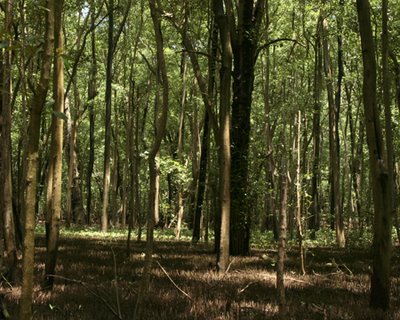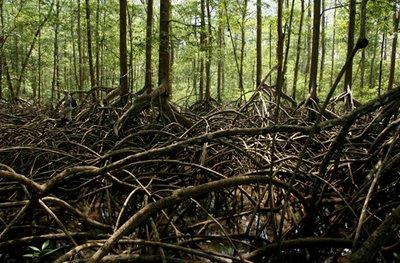Black Mangrove
On route from La Selva to the Palo Verde Biological Station, Jorge Jiménez, the director of OTS, joined us for an excursion into his research system: Costa Rica's black mangrove forests. Living at the intersection between salt water, land and sometimes fresh water, mangroves find their niche by adapting to the challenges of salt, flooding and toxins. In the picture below, you can see the trees' pneumatophores rising out of the ground like spikes. These appendages to the root system take in oxygen in the context of submerged soils. When completely flooded, black mangroves effectively "hold their breath" and have finite capacity to do so.
Mangrove vegetation occurs in 'zones' and in our short walk, the vegetation dramatically changed. We followed Jorge out to the submerged areas of the forest, discovering our inner primates while climbing across the elevated roots seen in this picture below.
Labels: Healthy Planet




0 Comments:
Post a Comment Hide comments